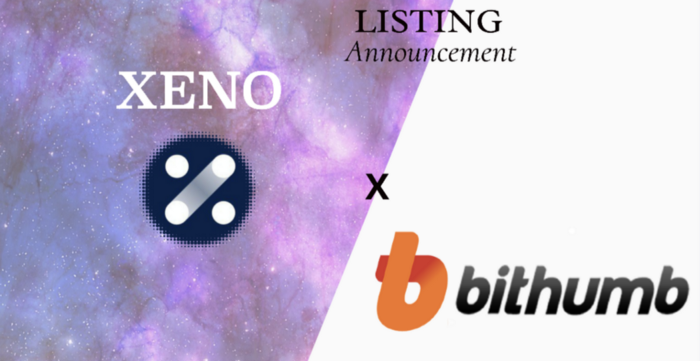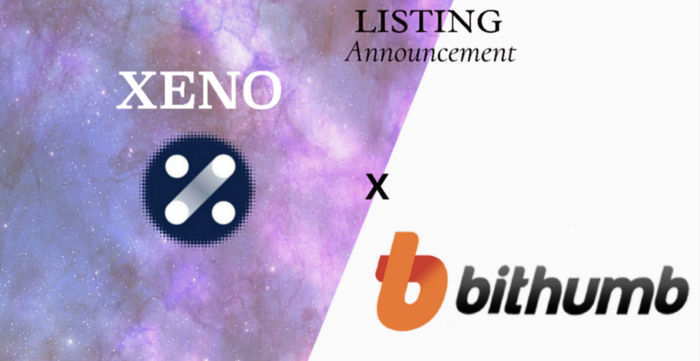Blogs
Understanding the Consequences of an Ethereum (ETH) Futures Market in the US

Last December, when we saw the Bitcoin futures market complex come into existence – first on the CBOE, and then on the CME a week later – it left a psychological scar in the crypto world that still resonates today.
Naturally, while financial theorists and academics continue to spin tales suggesting that Bitcoin futures actually hurt Bitcoin (and continue to do so today), the reality is this: by mid-December, excitement about Bitcoin had reached a fever pitch and the “bubble” was in full blossom (why do you think CBOE and CME were so eager to establish futures in the first place?). A market in that state is extremely fragile and any new catalyst can spark the needed deleveraging process. It’s a state of imbalance. And the universe abhors imbalance.
Moreover, it wasn’t the fact of Bitcoin futures coming into existence that caused Bitcoin to go down. It was the unsustainable parabolic rise in Bitcoin in the first place that caused Bitcoin futures to come into existence. However, as noted above, it left a scar.
This isn’t to suggest that Bitcoin can’t surpass its former highs. It surely can over time. However, a parabolic market mania is a parabolic market mania. It is unsustainable by definition. The advent of the futures market for Bitcoin was a well-timed crowning catalyst, much as we often see today when a group of stocks finally gets noticed enough to be crowned by a new ETF instrument. That invariably marks a top. Check out “FAN” for wind stocks, or “TAN” for solar stocks, or “MOO” for agriculture, or countless other examples. New financial instruments are often a symptom of a speculative imbalance rather than the cause of an inflection.
That takes us to the present day, and what, if anything, might result from the advent of Ethereum futures.
Ethereum Futures
First and foremost, markets are highly susceptible to post-traumatic stress disorder. In other words, the establishment of a “bogeyman” in the narrative of recent market history will impact how people position capital afterward, particularly when there are signs of the reappearance of that same bogeyman in the narrative.
In this case, the launch of an Ethereum futures contract in London in early May likely presented traders with a strong sense of “Oh no, here we go again!”, especially since Ethereum had rallied more than 100% in a single month into that launch, and subsequently started to decline immediately afterward.
However, while these fears may have a rational hook into the fabric of reality, there is another narrative that may deserve consideration.
The Big Point of Crypto Futures
At present, the principal use of the Bitcoin futures markets is for large-speculator hedging activity, according to CFTC reports. The data is incontrovertible at this point. The latest Commitment of Traders report for Bitcoin futures from the CFTC showed large specs carrying 1,945 contracts net short on CBOE and another 377 net short on CME.
In other words, big players (crypto hedge funds) are carrying large short positions in Bitcoin futures most likely as a hedge against regulatory hurdles to offset large bullish bets on speculative alt-coins.
This is the future of the cryptocurrency space: find the next coin that is going to ramp from $25M to $2B in market cap. These are lotto ticket bets. But in an inefficient market, that’s a reasonable strategy, especially if you can segment out and cancel the risk of broadly negative regulatory developments that hit the whole of the crypto landscape.
Where’s the Opportunity?
In itself, this is not a negative for Bitcoin. Those contracts held short are offset by small speculator long positions. But, more importantly, we are no longer in a crypto bubble. We are firmly deep into a crypto bear market that may be nearing its depths. Hence, the introduction of a new major futures contract that gives funds more access to hedging matter isn’t likely to have the same impact as it did in either of the prior two instances.
That’s where the interesting opportunity arises for Ethereum traders: the one thing you can probably bet on is that there is lots of money that “wants” to be in Ethereum, but is sitting on the sidelines because it doesn’t want to buy in front of the announcement that CBOE or CME is about to launch a contract.
In other words, it is hardly far-fetched to contemplate the idea that the Great Crypto Bear of 2018 might well be book-ended by the launch of major futures contracts in Chicago: Bitcoin Futures marking the birth of the bear, and Ethereum Futures marking the birth of the new bull.
For the latest cryptocurrency news, join our Telegram!
Disclaimer: This article should not be taken as, and is not intended to provide, investment advice. Global Coin Report and/or its affiliates, employees, writers, and subcontractors are cryptocurrency investors and from time to time may or may not have holdings in some of the coins or tokens they cover. Please conduct your own thorough research before investing in any cryptocurrency and read our full disclaimer.
Image courtesy of Pexels
Altcoins
XNO Token of Xeno NFT Hub listed on Bithumb Korea Exchange


Hong Kong, Hong Kong, 25th January, 2021, // ChainWire //
Xeno Holdings Limited (xno.live ), a blockchain solutions company based in Hong Kong, has announced the listing of its ecosystem utility token XNO on the ‘Bithumb Korea’ cryptocurrency exchange on January 21st 2021.
Xeno NFT Hub (market.xno.live ), developed by Xeno Holdings, enables easy minting of digital items into NFTs while also providing a marketplace where anyone can securely trade NFTs.
The Xeno NFT Hub project team includes former members of the technology project Yosemite X based in San Francisco and professionals such as Gabby Dizon who is a games industry expert and NFT space influencer based in Southeast Asia.
NFT(Non-Fungible Token) technology has recently gained huge focus in the blockchain arena and beyond, making waves in the online gaming sector, the art world, and the digital copyrights industry in recent years. The strongest feature of NFTs is that “NFTs are unique digital assets that cannot be replaced or forged”. Unlike fungible tokens such as Bitcoin or Ether, NFTs are not interchangeable for other tokens of the same type but instead each NFT has a unique value and specific information that cannot be replaced. This fact makes NFTs the perfect solution to record and prove ownership of digital and real-world items like works of art, game items, limited-edition collectibles, and more. One of the ways to have a successful…
Altcoins
Should Crypto Projects Devote Resources to Community Growth and Marketing?

2020 has been an incredible year for crypto as investors have generated windfall profits and crypto projects have seen their businesses gain the spotlight they’ve been looking for. While Bitcoin has received most of the attention after major institutional investors announced they were accumulating the increasingly scarce asset, many altcoins have also seen their fair share of glory. When looking at all the big winners of the past year, the first project that probably comes to mind is Chainlink, having appreciated by more than 550% YTD and now valued at over $4.5 billion. But, the actual biggest winner of the year is HEX with a YTD return of over 5,000%.
I mention both of the above projects as they have each taken slightly different paths to achieve greatness. Chainlink has devoted resources toward building a fundamentally sound business with many strategic partnerships while HEX has spent vast sums of money on marketing and promotion. Both approaches are valid, but one thing is certain, it is absolutely imperative for crypto projects to let the crypto community know what makes them special. Of course, one of the reasons that makes crypto so valuable is the powerful blockchain technology that most projects are utilizing.
Cryptocurrency vs. Blockchain Technology
It’s important to make a distinction between blockchain technology and cryptocurrency. Although they are often used interchangeably, they are different. Blockchain technology and crypto were both created after the 2008 financial crisis, but cryptocurrency…
Altcoins
XENO starts VIP NFT trading service and collaborates with contemporary artist Hiro Yamagata


Hong Kong, Hong Kong, 24th December, 2020, // ChainWire //
The XENO NFT Hub (https://xno.live) will provide a crypto-powered digital items and collectables trading platform allowing users to create, buy, and sell NFTs. Additionally it will support auction based listings, governance and voting mechanisms, trade history tracking, user rating and other advanced features.
As a first step towards its fully comprehensive service, XENO NFT Hub launched a recent VIP service to select users and early adopters in December 2020 with plans for a full Public Beta to open in June 2021.
“NFTs are extremely flexible in their usage, from digital event tickets to artwork, and while NFTs have a very wide spectrum of uses and categories XENO will initially focus its partnership efforts and its own item curation on three primary areas: gaming, sports & entertainment, and collectibles.”, said XENO NFT Hub president Anthony Di Franco.
He also added “This does not mean we will prohibit other types of NFTs from our ecosystem However, it simply means that XENO’s efforts as a company will be targeted into these verticals initially as a cohesive business approach.”
Development and Procurement Lead, Gabby Dizon explained, “Despite our initial focus, we found ourselves with a unique opportunity to host some of the works of Mr. Hiro Yamagata. We are collaborating with Japanese artist Hiro Yamagata to enshrine some of his artwork into NFTs.”
Mr. Yamagata has…
-

 Blogs6 years ago
Blogs6 years agoBitcoin Cash (BCH) and Ripple (XRP) Headed to Expansion with Revolut
-

 Blogs6 years ago
Blogs6 years agoAnother Bank Joins Ripple! The first ever bank in Oman to be a part of RippleNet
-

 Blogs6 years ago
Blogs6 years agoStandard Chartered Plans on Extending the Use of Ripple (XRP) Network
-

 Blogs6 years ago
Blogs6 years agoElectroneum (ETN) New Mining App Set For Mass Adoption
-

 Don't Miss6 years ago
Don't Miss6 years agoRipple’s five new partnerships are mouthwatering
-

 Blogs6 years ago
Blogs6 years agoCryptocurrency is paving new avenues for content creators to explore
-

 Blogs6 years ago
Blogs6 years agoEthereum Classic (ETC) Is Aiming To Align With Ethereum (ETH)
-

 Blogs6 years ago
Blogs6 years agoLitecoin (LTC) Becomes Compatible with Blocknet while Getting Listed on Gemini Exchange













